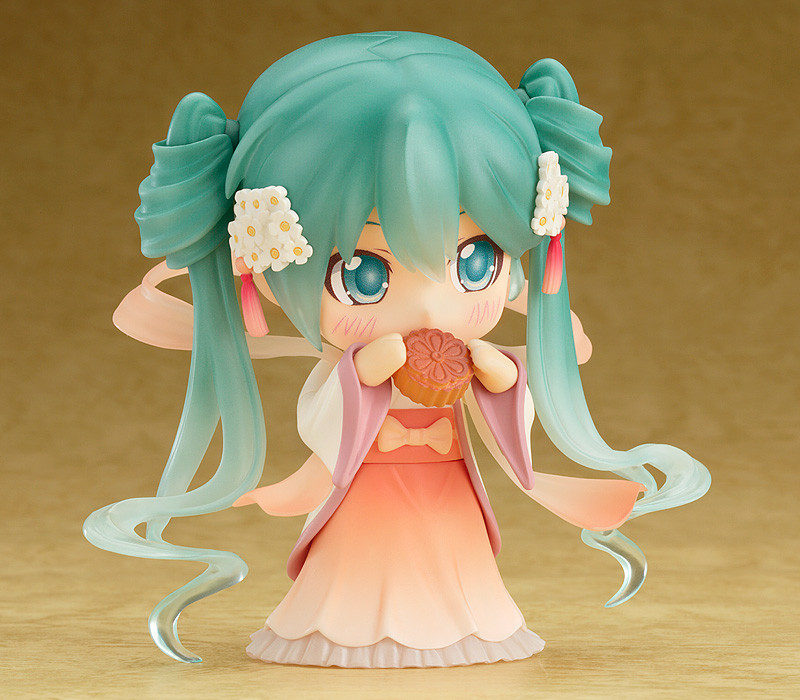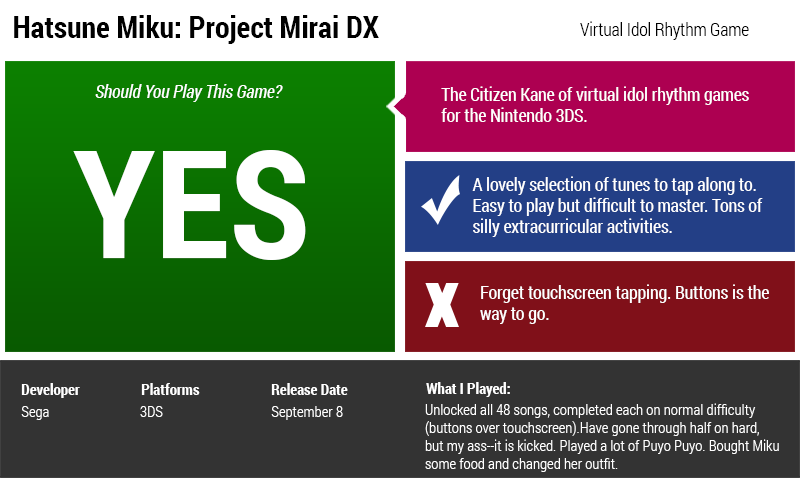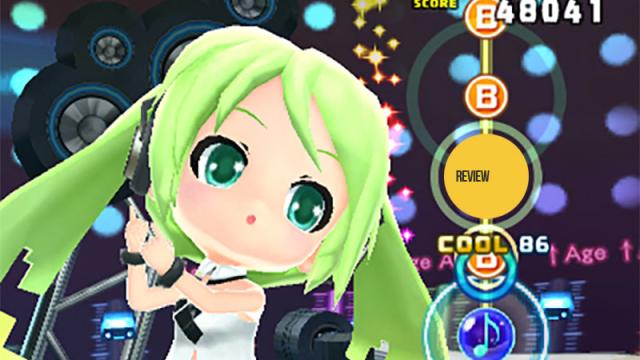It’s quite likely your reaction to this image will dictate whether or not Hatsune Miku: Project Mirai DX is the sort of game you’d like to play.
Musical notes, button prompts, anime girl with headphones — it’s immediately recognisable as a rhythm game, a genre that’s never reached the heights of popularity in the Western world that it’s enjoyed for years in Asia.
Guitar Hero and Rock Band notwithstanding, most of the more popular rhythm games over the years have been Japanese or Korean creations — the Dance Dance Revolution series, Parappa the Rappa, Elite Beat Agents, Dj Max and more recent titles like Square Enix’s Theatrhythm and Sega’s PlayStation-exclusive Hatsune Miku: Project Diva games.
If you’re a Western fan of rhythm games, any title being brought over for Japan or Korea is cause for excitement, especially these days, when the majority of beat-tapping titles are mobile releases. So if you’re a rhythm game fan and a 3DS owner, it’s likely the toy-based offshoot of the Project Diva series is on your shopping list already.
If it’s not, it should be. The tapping in time here is top notch and comes in two flavours — button presses or stylus taps. Notes flow along a line and players must either press the correct buttons or tap the proper portion of the screen at the right time in order to keep their note combo going. It’s pretty easy to breeze through the game’s 48 songs in easy mode, but that’s not what rhythm games are all about. Mastering tunes on hard difficulty is tough, especially when you’ve been playing Xbox One and PlayStation games and keep losing track of the X, Y and B buttons.
That’s not me playing. That’s YouTuber kazuyasasa HuntersGrind Gameplay, who has got an entire playlist of the game’s 48 songs played perfectly on hard. I hate him so much.
But I don’t hate the rhythm game. I appreciate the challenge. It makes me want to be a better player. Mind you I am talking about the button-based rhythm game here. A new additional to the series not seen in the first Project Mirai game (Project Mirai DX is a port of Japan’s Project Mirai 2), the option to tap along with the stylus on the 3DS touchscreen is novel, but not for me. I need thumbs and buttons for this sort of game, as well as a degree of precision the touchscreen controls lack.
The rhythm gamer in me is quite pleased with what Sega has presented here, and that’s on top of the pleasure gained from Sega deciding to bring the title to North America and Europe at all.
Maybe you’re a fan of Hatsune Miku, Japan’s most popular virtual idol. She’s the humanoid persona of a singing synthesiser program created by Crypton Future Media who’s taken on a life of her own. She’s a superstar without the ego, with songs written by people all over the world — more than 100,000 to date.
She regularly performs live on stage in holograph form, backed by a live band. She’s a bit of a big deal, even if David Letterman doesn’t understand. Her hardcore Western fans will no doubt welcome this release.
The game features 48 of Miku’s top hits, many of which I’ve not encountered in the PlayStation 3/Vita games we’ve gotten Stateside. As with most Hatsune Miku compilation, the genres are all over the place. I’ve found a couple new favourites, including “Hello/How Are You?” seen in the gameplay video above, and the damn “Payapaya Kitten” song.
And then there are folks who just enjoy Japanese anime-looking characters with giant heads. That’s cool too.

While the PlayStation-based Diva games feature a more proportionate version of the virtual idol, Project Mirai DX showcases Miku and friends in Nendoroid form, as seen in figures from Good Smile Company’s popular toy line.

To recap, that’s Hatsune Miku followers, rhythm game fans and lovers of things Japanese and freakishly adorable. You folks will love this game.
For the rest of you, Hatsune Miku: Project Mirai DX is something of a hard sell. Musically the game is all over the place — cute and poppy tunes, songs verging on hard rock, romantic ballads, nigh opera — at her core she’s just a robot voice singing what all sorts of different people tell her to sing. Sega Japan released a video showing excerpts of all the songs included in the game, so check it out — you might see something you like.
Besides the core rhythm game there’s plenty to do in Project Mirai DX, but most of it is firmly aimed towards the three groups I mentioned previously. Taking your favourite idol clothes shopping, sharing snacks, decorating their room, choreographing dance numbers, composing simple tunes and jamming along with the game’s music — it’s all icing on a funky little Japanese cake — the kind with the sliced strawberries on top.
Oh wait, I know.

There’s a Puyo Puyo mini-game! There’s also Reversi, but no one cares about Reversi.
Well, that about covers it. Adding ‘people who enjoy Puyo Puyo‘ to rhythm game fans, Miku followers and lovers of big-headed anime figures — Hatsune Miku: Project Mirai DX has something for everybody. It’s a modest challenge for the rhythmic tapping crowd, quirky fun, ridiculously adorable and the perfect game to play while waiting out those long Madden 16 loading screens.

Comments
6 responses to “Hatsune Miku: Project Mirai DX: The Kotaku Review”
Be aware that those jerks at EB Games told me that there would be no Australian release for this game… they now have it in stock with a 10 September release date.
Mostly because EBGames don’t usually “stock” any other games outside of the occasional AAA releases and limited LE’s
So they don’t pop on their databases till like.. 1-2 weeks before release? So even though they will stock a game you normally can’t rely on them listing it until closer to release.. they did the same w/ Project Diva f and f2nd as well..
Gotta ask a question that is troubling me… why does this article have an “in real life” tag on it instead of a Nintendo one? 😛
Dude, I hope you aren’t questioning the reality of Miku!
😛
Played the demo & enjoyed it.
If it drops to an affordable price soon or goes on a sale will probably grab it because of how different it is from my other 3DS games.
Sweet!! I wanna play this ^^